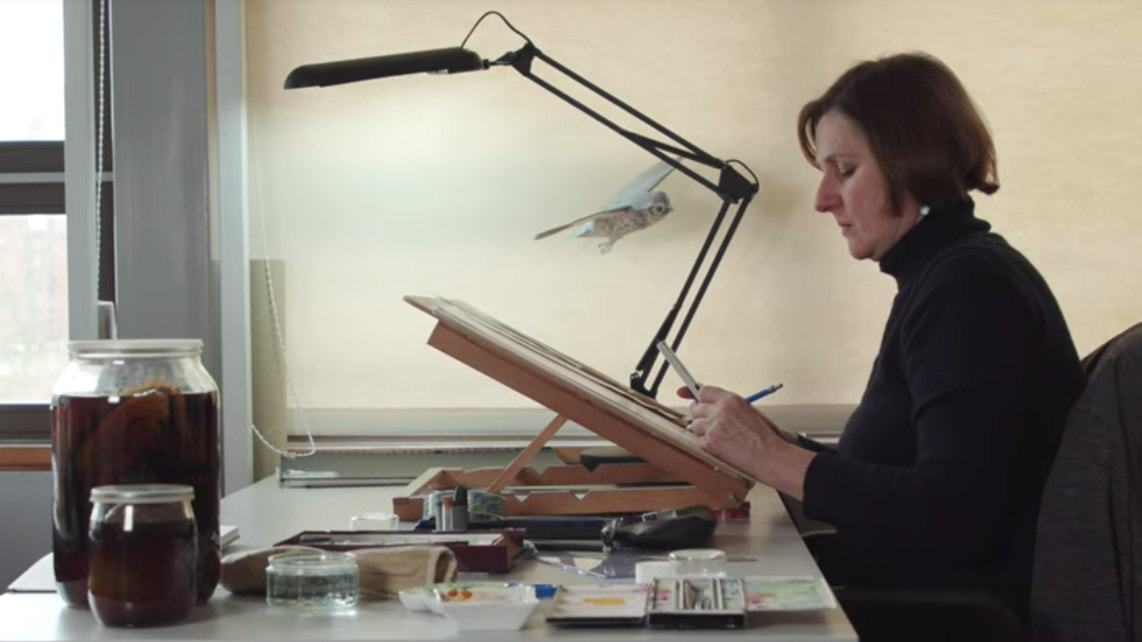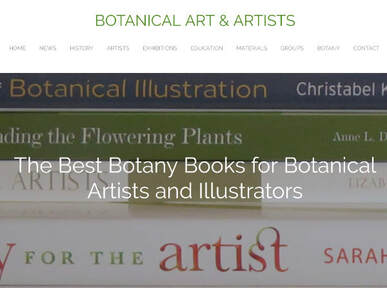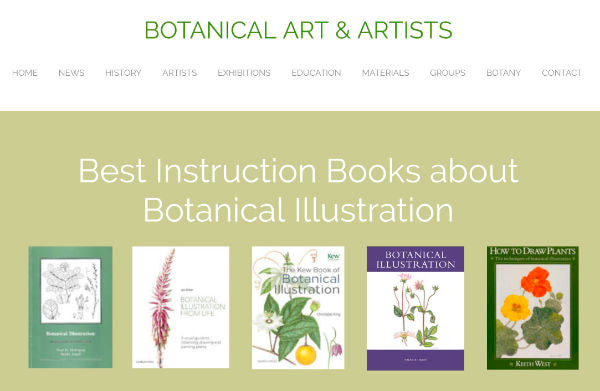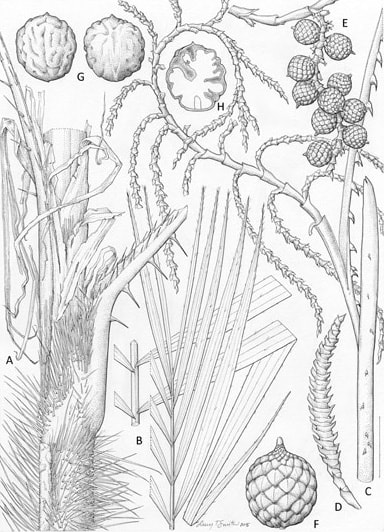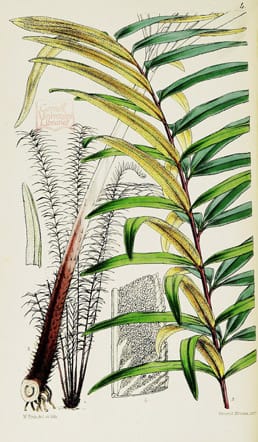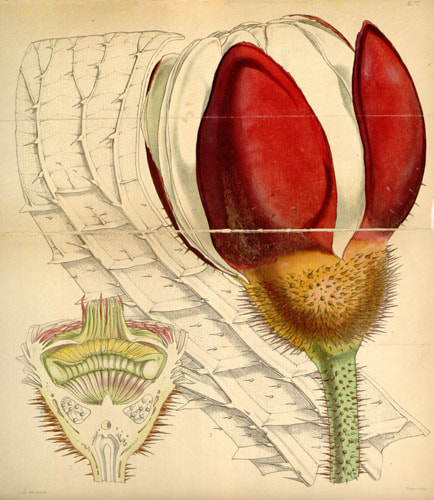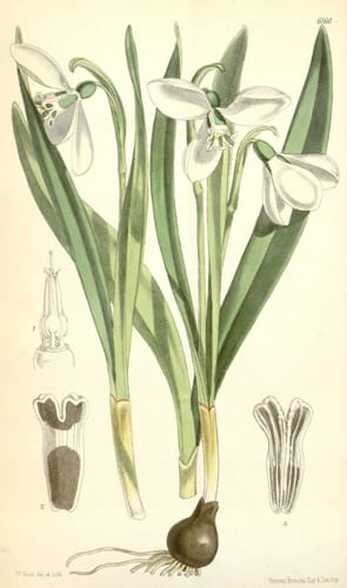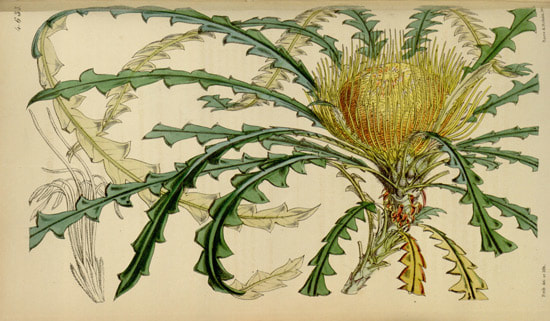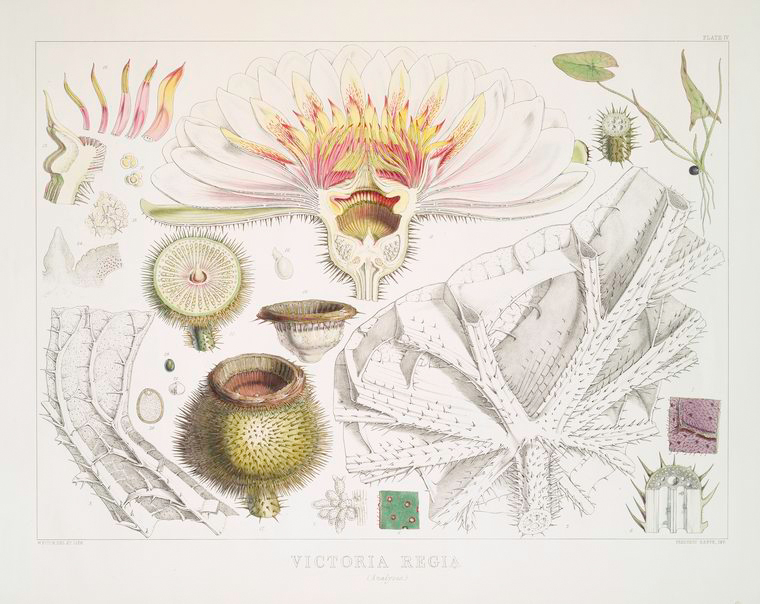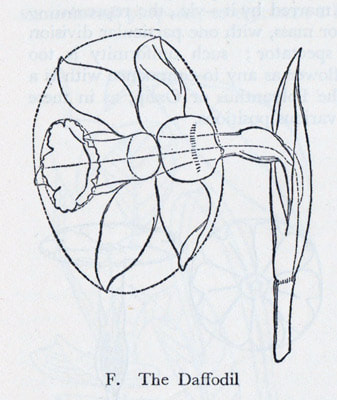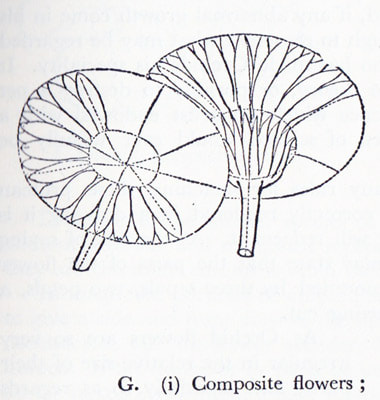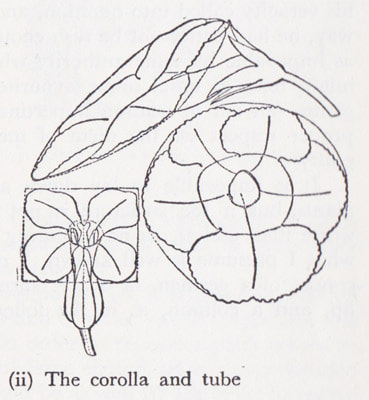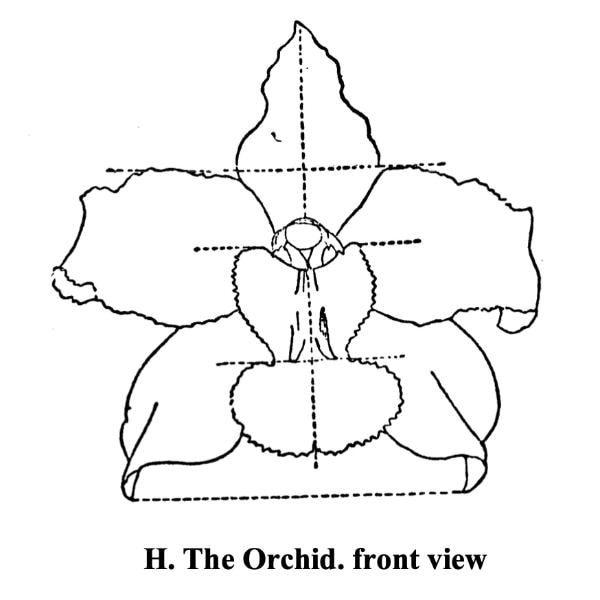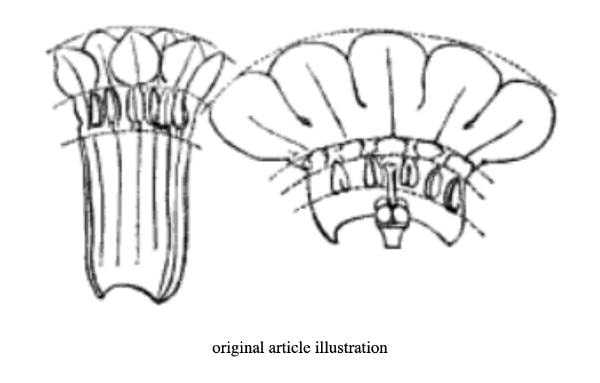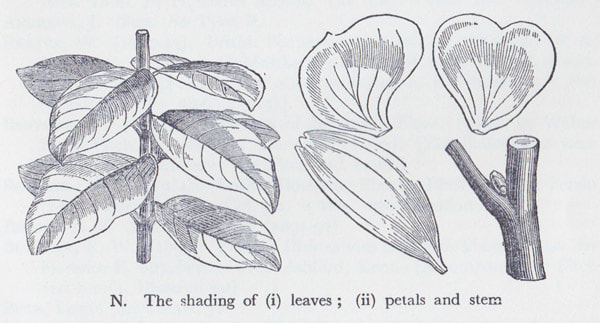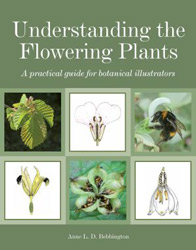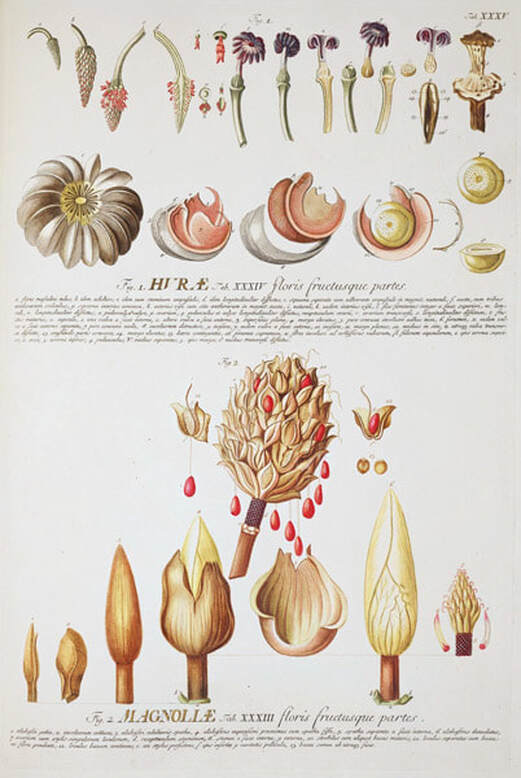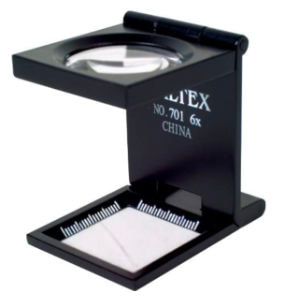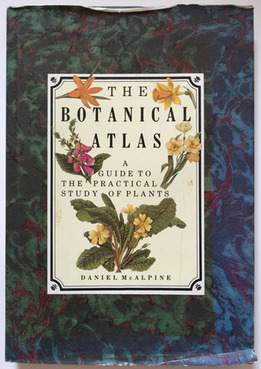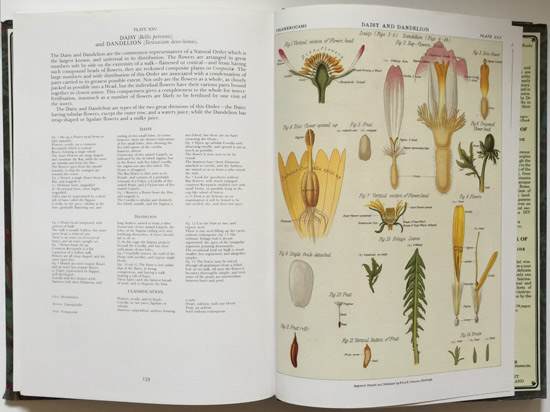- Home
- NEWS
-
HISTORY
- What is Botanical Art?
- What is Botanical Illustration?
- Botanical Art History Books >
- Herbals
- Florilegia and Flora
- Patrons of Botanical Art >
- Past Masters - Botanical Art and Illustration >
- Famous Asian Botanical Artists (600-1900)
- 20th & 21st Century Botanical Artists >
- Botanical Photographers
- Botanical and Herbal Art Online
-
ARTISTS
- Botanical Artists in the UK
- Botanical Artists in North America
- Botanical Artists in Europe
- Botanical Artists in Australia and New Zealand
- Botanical Artists in Asia
- Botanical Artists in Africa
- Botanical Artists in Latin America
- Botanical Printmakers, Photographers, Sculptors et al
- The Jill Smythies Award
- Botanical Artists on Facebook
- Botanical Art Blogs
-
Exhibitions
- Calls for Entries - OPEN exhibitions
- Online Exhibitions >
- RHS Botanical Art & Photography Shows >
- The Shirley Sherwood Gallery of Botanical Art >
- Hunt International Exhibition of Botanical Art & Illustration
-
UK
>
- North America >
- Europe >
- Australasia >
- Asia >
- Africa
- ARCHIVE: World Wide Exhibition of Botanical Art 2018
-
Education
- NEW BOOKS about Botanical Art and Illustration >
-
Best Botanical Art Instruction Books
>
- Tips and Techniques >
- Botanical Art Video Tips >
- Online Botanical Art Instruction >
- International Directory: Botanical Art Teachers
- International Directory of Botanical Art Courses >
- Artist Residencies, Scholarships and Bursaries
- Diplomas and Certificates >
- Distance Learning Courses
- Talks, Lectures & Tours
- Botanical Education on Facebook
- Materials
- Groups
-
Botany
- Why botany matters to artists
- Botany Books for artists >
- Scientific botanical illustration
- Plant Forms and Anatomy
- Plant Evolution and Taxonomy
- Plant Names and Botanical Latin
- Botanical Dictionaries
- How to Identify Plants
- Recording a Plant / Sketchbooks >
- Botanic Gardens & Herbaria >
- Blogs about Plants and Flowers
- Contact
This page is about the education, advice and aids relating to the illustration of plants to scientific standards.
|
It includes reference to:
|
Scientific botanical illustrations depict a particular plant, showing all the necessary features that distinguish it from other plant species. |
Banner image: A Magnolia species: flowering stem with labelled floral segments, fruit and seed. Coloured etching by G. D. Ehret, c.1737, after himself.. Credit: Wellcome Collection. CC BY
Books about Botany and Botanical Illustration - from a Scientific Perspective
Just tap the image or the title underneath to go straight to relevant page on this website.
Below you will find links to the two pages I've created which list the books I think you will find very helpful.
While I hope you find the content on this page useful, it's very much the case that there are certain books which can be very helpful to all those wishing to understand more about botany and a scientific approach to botanical illustration.
These have been written by practising botanists, scientific illustrators and botanical illustrators working regularly with botanists.
While I hope you find the content on this page useful, it's very much the case that there are certain books which can be very helpful to all those wishing to understand more about botany and a scientific approach to botanical illustration.
These have been written by practising botanists, scientific illustrators and botanical illustrators working regularly with botanists.
Thoughts on the scientific illustration of plants
Every time we draw a plant we are making judgements about what we are depicting. With botanical knowledge, we are able to highlight the most important features of a plant, get rid of any detail that is not important, and reconstruct a specimen. You have a responsibility when you are working for the scientists on specimens because you need to show the absolute truth. Accuracy of scale is very, very important, everything is measured and we make sure that the colour is true to life. |
Anyone wanting experience in these matters must encounter the plants as shoots newly emerged from the earth, plants in their prime and plants in their decline. For someone who has come across the shoot alone cannot know the mature plants, nor if he has seen only the ripened plants can he recognise the young shoot at all |
Botanical Illustration is a genre of art that endeavours to faithfully depict and represent the form, colour and detail of a plant, identifiable to species or cultivar level. As a technical discipline, botanical illustration emphasizes the depiction of accurate information, documenting the anatomical and functional aspect of a plant throughout its life cycle. The best botanical illustration successfully combines scientific accuracy with visual appeal. It must portray a plant with the precision and level of detail for it to be recognised and distinguished from another species. |
Scientific illustrations are critical for differentiating species The main goal of botanical illustration is not art, but scientific accuracy. It must portray a plant with the precision and level of detail for it to be recognized and distinguished from another species. Scientific illustration of plants is an important aspect of the larger realm of botanical art, defined by its purpose as an aid to the study and classification of plants. |
This is a video by the Smithsonian Institute, featuring Alice Tangerini talking about her work as a scientific botanical illustrator.
Scientific Botanical illustration
SUMMARY of TIPS and TECHNIQUES
What to do
|
Pointers on what NOT to do
|
Margaret Flockton Award
The Margaret Flockton Award is devoted to the promotion of scientific botanical illustration as opposed to botanical art.
A serious botanical drawing is a scientific statement and precision and accuracy are essential.
Judges comments on submissions for the Margaret Flockton Award
|
The organisers provide guidelines and feedback for those entering the competition on the website.
A Guide to Botanical Illustration - for the Margaret Flockton Award for excellence in scientific botanical illustration. The Guide expands on the criteria for excellent botanical illustration. Also study the Judges comments about the reasons why illustrations failed to win awards. ...the evaluation of entries is based on the following criteria: |
Walter Hood Fitch's Instructions for Botanical Drawing - A Synopsis
a knowledge of botany, however slight, is of great use in enabling the artist to avoid the errors which are occasionally perpetrated in respectable drawings and publications Walter Hood Fitch wrote eight articles for The Gardeners' Chronicle in 1869. The article remind me of Ruskin's Elements of Drawing in the sense that there are nuggests of wisdom cloaked in an awful lot of words.
What follows are my words summarising the instructions for botanical drawing provided by Walter Hood Fitch. I've also included references to websites where you can read the original. I've not followed the order of his comments and have tried to highlights clear sub-sets eg on shading. All quotations below are by Walter Hood Fitch |
REFERENCE:
- 1869 - Botanical Drawing - A How-To Series by Walter Hood Fitch - facsimile of the articles
- Botanical Drawing I by Walter Hood Fitch | reproduced in the Journal of New Zealand Native Orchids
- Walter Hood Fitch | Nature
- The Art of Walter Hood Fitch | Kew Gardens - Library, Art and Archives
- Walter Hood Fitch - an 'incomparable botanical artist' | Kew Gardens - Lynn Parker looks at the story of Walter Hood Fitch (1817-1892), one of the most talented botanical artists of the 19th century.
- Appendix A Botanical Drawing | The Art of Botanical Illustration by Wilfrid Blunt - Eight articles by Walter Hood Fitch. Reprinted from the Gardens Chronicle 1869
What is a strictly botanical drawing?
A strictly botanical drawing generally represents but one or two individual plants and they must be equally correctly drawn and coloured
For flower drawing smooth paper is best suited, as it allows of finer touches and lines, and smoother washes of colour.
The best pencil to use is an H. for delicate subjects, such as white flowers, and an F. for leaves, and any part which is to receive dark colours, so that the lines may not be entirely obliterated.
In botanical subjects it is sometimes desirable to represent the roots, bulbs, etc., but they are so easily drawn that I think no special directions are necessary.
The best pencil to use is an H. for delicate subjects, such as white flowers, and an F. for leaves, and any part which is to receive dark colours, so that the lines may not be entirely obliterated.
In botanical subjects it is sometimes desirable to represent the roots, bulbs, etc., but they are so easily drawn that I think no special directions are necessary.
|
Botanical Drawing - Part 2
Recommended art materials
Dried specimens vs direct observation
Backgrounds
Shading
Translucency
|
|
Drawing stems
Drawing Leaves
|
Leaves have been subjected to more bad treatment by the draughtsman than perhaps any other portion of the vegetable kingdom; they have been represented, or rather misrepresented in all kinds of impossible positions. Numerous are the tortures to which they have been subjected: dislocated or broken ribs, curious twists, painful to behold - even their wretched veins have not escaped; and all these errors in perspective arise from inattention to the simple fact, that in a curved leaf, showing the under side, the midrib should be continuous, and the veins should spring from the midrib.
|
Botanical Drawing - Part 3
Leaves in perspective
|
Hairs and spines
|
|
Botanical Drawing - Part 4
Drawing Flowers
|
Botanical Drawing - Part 5
Composite flowers - like the daisy
Composite flowers - like the daisy
- first faintly define them, then subdivide by lines radiating from the centre, as a guide for the direction of the outer florets. (otherwise the florets will twist or curve to one side or the other)
- Scientific drawings: mark the number of florets and number of teeth at the tips; note the direction of the florets and whether spreading or relaxed
- four-petaled flowers eg wallflower: draw a square or circle around the petals then divide into four parts
- Pendulous flowers eg Fuchsia: note the curve formed by the peduncle or stalk. Indicate the flower stalk by a faint line through the flower to achieve the correct axis
- how to fit a corolla onto its tube: see Fig Gii
Sketching living plants is merely a species of copying, but dried specimens test the artist s ability to the uttermost; and by drawings made from them would I be judged as a correct draughtsman.
|
Botanical Drawing - Part 6
The Drawing of Orchids
|
Owing to the great variation in form pre- sented by some species, if the artist render correctly any specimen put in his hands, he is liable to have his veracity called into question, and, if any abnormal growth come in his way, he had better not be rash enough to represent what may be regarded as impossible by some authority who has made Orchids his speciality. It might tend to upset some favourite theory, or possibly to destroy a pet genus―an act of wanton impertinence which no artist endowed with a proper respect for the dicta of men of science would ever wilfully be guilty of!
|
Botanical Drawing - Part 7
Dissections
|
|
Botanical Drawing - Part 8
Shading of Plants
|
Sketching living plants is merely a species of copying, but dried specimens test the artist s ability to the uttermost; and by drawings made from them would I be judged as a correct draughtsman. |
Stella Ross-Craig on botanical illustration
Stella Ross-Craig (1906 - 2006) - described by Wilfred Blunt as ‘unrivalled’ in her field.
- 1929 - began work at the Royal Botanic Garden Kew as a botanical illustrator in 1929
- 1949-1970: chief artist on Curtis's Botanical Magazine from 1949 until 1970.
- 1973: completed her initiative to draw all flowering plants growing naturally in the British Isles in pen and ink. Drawings of British Plants covers 1,306 plates in eight volumes plus an index. The drawings for each species cover one page.
- 1995: had her first botanical art exhibition.
- 1999 - received the Kew Award medal.
- 2001-2. - A small selection of her drawings were exhibited at Inverleith House by RBGE
- 2003 - 55 of the originals for Drawings of British Plants were exhibited at Kew Gardens Gallery
- 2006 - died age 99.
‘When making a watercolour painting of a living specimen, I first study the plant from all angles—as a sculptor might study a head when making a portrait—to grasp its character . . . |
LEARNING POINTS: The importance of:
|
Lucy T. Smith on scientific botanical illustration
Presentation prepared and delivered by Lucy Smith, freelance botanical artist
at 'The Making of Modern Botany' Conference at the Royal Botanic Gardens Kew. 30 June 2017.
DOWNLOAD a FREE copy of the presentation via Lucy Smith "Joseph Hooker and his Artist Walter Hood Fitch: the continuing tradition of botanist and artist collaboration". Joseph Hooker bicentenary conference, RBG Kew. from Virginia Mills
ABSTRACT: For over forty years, botanical artist Walter Hood Fitch worked for both William and Joseph Hooker as chief illustrator for Kew publications. His collaboration with Joseph Hooker began before Joseph Hooker even worked at Kew – illustrating his journals and publications while he travelled - and continued under Joseph Hooker’s editorship of Curtis’s Botanical Magazine and Icones Plantarum. The legacy of Fitch’s close collaboration with the Hookers is an outstanding contribution to botanical art. Today, botanical artists continue to produce illustrations for Kew’s publications, all of which are added to a vast archive of artworks that stretches back to Fitch’s contributions and beyond. In this talk I will show how botanical artists continue to work with Kew’s botanists for science and horticulture, and how Fitch’s work still inspires us.
REFERENCE:
Lucy Smith shares about her work as a scientific botanical illustrator who works for the botanists at Kew Gardens on a regular basis.
Below are two articles from a new series about real life as a professional scientific botanical illustrator on her website.
Lucy Smith shares about her work as a scientific botanical illustrator who works for the botanists at Kew Gardens on a regular basis.
Below are two articles from a new series about real life as a professional scientific botanical illustrator on her website.
|
Working as a Scientific Botanical Illustrator
|
Other articles about Lucy and her work include:
|
LEARNING POINTS:
- type of publication determines:
- size of illustration (find this out out first!)
- level of detail required
- scientific botanical illustrations resize plants for illustration - depending on the size of the plants e.g. Lucy illustrates Palms and usually sizes illustrations to be one-third to one-half smaller than the original size of the plant features
- communication is critical to a good end result
- essential to meet botanist and understand their brief and record what is required
- find out about any relevant conventions for illustrating particular plants
- handle herbarium specimens VERY carefully - many are irreplaceable
- create sketchbook pages for preliminary drawings and notes
- always look at the large parts of a plant first to work out how to fit them within the required format
- work out compositions by laying dried specimens on a sheet of paper of the right format
- use proportional dividers - set to the right ratio - for accurate measuring of reduced size prior to drawing
- draw lightly on paper using a 2H pencil
- work from placement to design to detail
- draw the leaflets, inflorescence and infructescence
|
Other Publications
|
As you scan Tangerini drawings online you’ll notice that they are mostly black and white with little shadow. They follow illustrative styles dating back hundreds of years. Stems and some leaves are shown with parallel lines to indicate venation (veins). Hairy plants are drawn with stipples or small dots and specks. The light source is customarily from the upper left-hand corner of the drawing sheet. |
Understanding the Flowering Plants: A Practical Guide for Botanical Illustrators
by Anne Bebbington
by Anne Bebbington
|
This NEW book covers:
|
Paperback: 256 pages Publisher: The Crowood Press Ltd Publication date: 23 Oct. 2014 RECOMMENDED
Average Customer Rating out of 5 stars:
BUY THIS BOOK |
MEDIA for Rendering Scientific Botanical Illustrations
Rendering in Pen and Ink
|
Most scientific botanical illustrators use pen and ink for their botanical illustrations.
Pencil is often used first to get the drawing right, with the pen and ink being used to strengthen the line and make it clearer when it is reproduced or displayed. The who are very experienced in the use of pen - and have planned and plotted their composition - can start to draw using pen alone. Pens you can use include:
The techniques which need to be mastered include:
|
See also Botanical Illustration Tips: Pen and Ink This covers:
REFERENCE:
|
This is a video by Rogério Lupo - Ilustração Científica - about his process of rendering pen nib and ink botanical illustrations.
My method for rendering scientific botanical illustrations is still quite handcrafted, remaining away from digital systems, which are welcome though when it's time to scan the drawing and add scales, captions etc. But that's how I can work better on the composition, and after all this is still handier and faster than what I would get using some software. Suggestion: watch it in a good wide monitor, full screen in order to see details. Rogério Lupo
Rendering in graphite
“you must focus on structure, and through your pencil bring it back to life, straightening out folded stems and leaves, bringing back curves and twists, adding a source of light to enliven the surface.”
Alice Tangerini comments on drawing from dried plant material
|
Graphite pencil can be used for:
Graphite usually relies on shading to achieve tonal depth and for that reason might not be chosen for scientific illustrations which are going to be reproduced. Rogerio Lupo's guidebook below provides a lot of information for those interested in rendering in graphite. |
See also Video Tips - Pencil Drawing This page covers REFERENCE:
|
BELOW is the Graphite for Scientific Illustrations - Supplement to the free Guidebook with English subtitles
by Rogerio Lupo, Brazilian winner of the Margaret Flockton Award in 2010 and 2013.
(kindly reviewed by Bobbi Angell, American Botanical Illustrator).
PLUS a video lesson which aims to support the study and practices of the Guidebook: Graphite and its Possibilities Applied to Scientific Illustrations.
by Rogerio Lupo, Brazilian winner of the Margaret Flockton Award in 2010 and 2013.
(kindly reviewed by Bobbi Angell, American Botanical Illustrator).
PLUS a video lesson which aims to support the study and practices of the Guidebook: Graphite and its Possibilities Applied to Scientific Illustrations.
Click the above link to go to Slideshare where this document can be downloaded for free
Botanical Illustration - Dissection
Dissection can be a little daunting. You have been looking at flowers for a long time, and because you have been drawing and painting them you have a head start on understanding what you see under the scope, but you may have some preconceived ideas that you need to overcome.
Dick Rauh
|
REFERENCE:
ASBA provides three articles relating to Dissection. They rework the same messages.
Other articles about dissection:
|
Botanical illustration - Drawing Tools and Aids
There are a number of tools and techniques which assist with:
- seeing accurately
- precise measurement
- conveying measurements on an illustration
- rendering tone accurately
TECHNICAL AIDS | SCALE, MAGNIFICATION, MEASUREMENT AND SCALE BARS
|
Measuring is VERY important to botanical illustration. Hence the need to pay attention to scale and how to resize appropriately and draw accurately.
identifying a plant is based on all aspects of the plant as exhibited on the exterior and interior.
|
Biological drawings of newly described or revised species are expected to represent the type specimen with greatest possible accuracy. |
|
MEASUREMENT
Plants are usually drawn at a 1:1 scale. However:
|
REFERENCE:
|
|
MAGNIFICATION
There are various routes to seeing more accurately. You can use various technical drawing aids for magnification
At the same time it is of paramount importance that you pay attention to maintaining your eye health. If you ruin your eyes you won't be able to draw a thing! |
REFERENCE:
|
|
SCALE AND SCALE BARS
|
Use of scale bars, whilst not mandatory, is preferred. REFERENCE:
|
OPTICAL AIDS / MAGNIFICATION
To be developed.....
|
Magnifier: Linen Tester
|
A Linen Tester was designed so that quality assessors could count the number of threads within a precise measurement of woven cloth. At the top is a strong magnifier and at the bottom is a glass disc with a precise measurement scale.
They're also very useful for botanical inspection and illustration This Linen Tester is made of metal and folds flat. Reviews indicate it is made of metal and a quality product so the hinge should not wear out. They can last for years. This one provides a magnification of 6. You can also buy Linen Testers with higher magnification - or in larger sizes but typically with reduced levels of magnification. 6x Linen Tester Magnifier Loupe Precision Glass Lens
|
TECHNIQUES | LABELLING, LETTERING & SIGNATURES
|
TIPS:
|
Signature: The signature should be neat, small and consistent, with the year noted. REFERENCE:
|
TECHNIQUES FOR SCIENTIFIC ILLUSTRATION
GNSI Techniques Sheets II
The techniques presented in this publication form the basis of 90% of the traditional techniques used for decades by prominent science illustrators. Available by digital download from GNSI for a very reasonable price ($15)
IAPI Tip Cards currently available (Drawing)
Scientific Illustration - Plastic Pencils - Halftone Illustration with Plastic Pencils on Drafting Film: A Vanishing Art By Alice Tangerini (ASBA Article)
The techniques presented in this publication form the basis of 90% of the traditional techniques used for decades by prominent science illustrators. Available by digital download from GNSI for a very reasonable price ($15)
IAPI Tip Cards currently available (Drawing)
- Grey Tip Cards (Illustration) cover techniques related to developing and completing an illustration
- Constructing a Scale Bar On one side the instructions are step by step, on the other from first principles.
- Setting Up and Using a Dissecting Microscope Instructions generalized to be suitable for any make of dissecting microscope, with a few points about drawing from the microscope.
- Habit Drawings What to show on habit drawings of the whole plant, to complement illustrations of detached shoots, with practical tips.
- Constructing a Scale Bar On one side the instructions are step by step, on the other from first principles.
- Green Tip Cards (Botanical) include:
- Naming and Classifying Plants Covers how to write scientific names, of families, genera, species, subspecies, variety, form, hybrids and cultivars.
- Analytical Illustration of Leaves A checklist of the features to look for: vein pattern, margins, stipules, phyllotaxis, and so on.
- Naming and Classifying Plants Covers how to write scientific names, of families, genera, species, subspecies, variety, form, hybrids and cultivars.
Scientific Illustration - Plastic Pencils - Halftone Illustration with Plastic Pencils on Drafting Film: A Vanishing Art By Alice Tangerini (ASBA Article)
Botanical Illustration - Aids and symbols for identifying plants
|
IAPI Tip Cards currently available (Botanical)
TipCards are A5 laminated cards containing information worth keeping to hand with the drawing materials, an aide-memoire for the topic concerned. There are three series, on card of different colours.
Home - The Plant List The Plant List - A working list for all plant species |
Plant Identification & Environmental Literacy | ArtPlantae Today
Which plants can you identify upon first glance? Are they plants from the nursery? From the florist? Are they native plants? Botanical symbols: a new symbol set for new images | (Botanical Journal of the Linnean Society (via Wiley Online Library - you need access) Symbols are simple visual elements that have a useful place in concise scientific plant descriptions |
Educational support from organisations
If you want to know more about scientific botanical illustration, it's worth studying the scope of and support provided by various organisations which focus specifically on the more scientific aspects of botanical illustration.
|
Institute for Analytical Plant Illustration
IAPI encourages the scientific illustration of flowering and non-flowering plants and communication of the diversity and intricacy of plant structures not necessarily visible to the naked eye. News and Events | IAPI Includes details of courses run by IAPI Facebook - Institute for Analytical Plant Illustration This page is useful for those want to:
|
Guild of Natural Science Illustrators
Shapes, anatomy, details, and concepts that cannot be conveyed with words form the essence of this art. Finished work appears in print, exhibits, CD-ROMs, the World Wide Web, video, and wall art. Study Guides provided by Museums Smithsonian - Botany Archive Botanical database includes examples of different botanical illustrations. Searches can be made by plant family, by common name and by media. It enables you to see how other illustrators have chosen to portray a specific plant Botanical Illustration Study Guide | Victoria and Albert Museum Listing of books and collections where you can study botanical illustration |
The Guild Handbook of Scientific Illustration (2nd Edition)
edited by Elaine R. S. Hodges
edited by Elaine R. S. Hodges
|
This handbook is commonly regarded as "the bible" within the scientific illustration community. It covers all techniques for rendering in conventional and digital media although the subject matter is not all botanical.
It is:
|
The book is professional and comprehensive - as one might expect from a 'proper' professional handbook which covers 652 pages!
It covers:
|
This book is expensive - however the price needs to be considered within the context of the fact it is a professional manual for people who spend their lives on scientific illustration.
I suggest you consider
Hardcover: 656 pages
Publisher: Wiley Edition: Second Publication date: May 29, 2003 Average Customer Rating out of 5 stars:
BUY THIS BOOK The Guild Handbook of Scientific Illustration
The Guild Handbook of Scientific Illustration
|
Botanical Illustration - a Commentary
Botanists use botanical illustrations in floras (books that describe all the plants of a particular country or region), in monographs about taxonomic groups, and in journal articles describing newly discovered plant species. |
I hear and I forget |
OLD: The Botanical Atlas by Daniel McAlpine
A Guide to the Practical Study of Plants
A Guide to the Practical Study of Plants
|
The images include the cover of my personal copy of the Bracken Books 1988 publication which I purchased second hand (hence the two-tone dog-eared cover!) and a double page spread of this large book.
This is a facsimile reproduction of an example of late Victorian scientific literature first published in 1882.
The book is large derived from a set of large wall-diagrams produced by German botanists in the late nineteenth century. The book is published in two parts covering:
|
This is a link to the Internet Archive of this book.
The Hunt Institute owns seven mostly incomplete sets of instructional wall charts produced in Europe in the late 19th and early 20th centuries.) Various companies have reproduced this book in hardback and paperback - and in varying degrees of quality.
I recommend buying from a reputable seller. BUY THIS BOOK Botanical Atlas a Guide to the Practical Study of Plants
|
The following are articles or other resources which comment on the scope and function of botanical illustration.
|
The History of Scientific Botanical Illustration
Scientific Illustration in the Eighteenth Century by Brian J Ford, Fellow of Cardiff University, Chairman of the Committee for the History of Biology and Member of Council, Institute of Biology, London. Better than a thousand words | Bioscience (Oxford Journals) - Botanical artists blend science and aesthetics |
Articles published by the American Society of Botanical Artists.
Each of the following relates to the working practices of those involved with the development of a specific Flora |
|
|
Resources about Botanical Art and For Botanical Artists
ABOUT: About the Author | Contact | Testimonials | Privacy Policy COPYRIGHT 2015-22: Katherine Tyrrell all rights reserved.
|
NEWS
News Blog about artists, awards, exhibitions etc. |
EXHIBITIONS
- Calls for Entries - Exhibitions around the world - Online Exhibitions - RHS Exhibitions - Hunt Exhibitions ORGANISATIONS
- Botanical Art Societies - national / regional / local - Florilegium & Groups - Botanical Art Groups on Facebook |
EDUCATION
- Tips and Techniques - Best Botanical Art Instruction Books - Directory of Teachers - Directory of Courses - Online Botanical Art Courses - Diplomas and Certificates - Talks, Lectures and Tours ART MATERIALS (Paper / Vellum) BOTANY FOR ARTISTS - Scientific Botanical Illustration - Best Botany Books for Artists - Plant Names & Botanical Latin BOTANIC GARDENS & Herbaria |
FEEDBACK
Please send me . - news to share - info. about exhibitions - any suggestions for what you'd like to see on this website ADVERTISE Contact me if you'd like to promote workshops and courses on this site. AFFILIATION This website is free to you but not for me! (See Affiliate Income below) |
|
Cookies, Personal Data & Privacy tells you how this site relates to and impacts on you and your privacy - and your choices.
Product & company names may be trademarks of their respective owners |
About Affiliate Income: This website has been created to share information not to make a profit. I am an Amazon Associate and earn from qualifying purchases (e.g. books from Amazon) which helps offset costs associated with maintaining this very large website.
|
- Home
- NEWS
-
HISTORY
- What is Botanical Art?
- What is Botanical Illustration?
- Botanical Art History Books >
- Herbals
- Florilegia and Flora
- Patrons of Botanical Art >
- Past Masters - Botanical Art and Illustration >
- Famous Asian Botanical Artists (600-1900)
- 20th & 21st Century Botanical Artists >
- Botanical Photographers
- Botanical and Herbal Art Online
-
ARTISTS
- Botanical Artists in the UK
- Botanical Artists in North America
- Botanical Artists in Europe
- Botanical Artists in Australia and New Zealand
- Botanical Artists in Asia
- Botanical Artists in Africa
- Botanical Artists in Latin America
- Botanical Printmakers, Photographers, Sculptors et al
- The Jill Smythies Award
- Botanical Artists on Facebook
- Botanical Art Blogs
-
Exhibitions
- Calls for Entries - OPEN exhibitions
- Online Exhibitions >
- RHS Botanical Art & Photography Shows >
- The Shirley Sherwood Gallery of Botanical Art >
- Hunt International Exhibition of Botanical Art & Illustration
-
UK
>
- North America >
- Europe >
- Australasia >
- Asia >
- Africa
- ARCHIVE: World Wide Exhibition of Botanical Art 2018
-
Education
- NEW BOOKS about Botanical Art and Illustration >
-
Best Botanical Art Instruction Books
>
- Tips and Techniques >
- Botanical Art Video Tips >
- Online Botanical Art Instruction >
- International Directory: Botanical Art Teachers
- International Directory of Botanical Art Courses >
- Artist Residencies, Scholarships and Bursaries
- Diplomas and Certificates >
- Distance Learning Courses
- Talks, Lectures & Tours
- Botanical Education on Facebook
- Materials
- Groups
-
Botany
- Why botany matters to artists
- Botany Books for artists >
- Scientific botanical illustration
- Plant Forms and Anatomy
- Plant Evolution and Taxonomy
- Plant Names and Botanical Latin
- Botanical Dictionaries
- How to Identify Plants
- Recording a Plant / Sketchbooks >
- Botanic Gardens & Herbaria >
- Blogs about Plants and Flowers
- Contact
